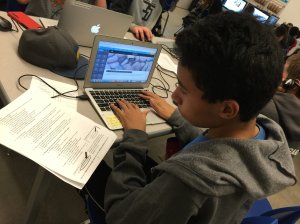#ThinkPossible for 21st Century Classrooms

I met with my advisor a couple weeks before classes started and he suggested I try a new class in Educational Technology. My first response was to shake my head. “No. I’ve been teaching long enough to know there isn’t enough money for technology, and even if I have computers in my classroom, there isn’t enough support to keep them functional.”
"Well,” he said, “why don’t you try just one class and see how it goes? It’s taught by a new professor and she’s really great.”
I left his office discouraged, wondering if the timing was even right for me to do this. I certainly didn’t want to devote time and money to a degree if I wasn’t enthusiastic about the studies.
Fast forward just one week: that new class with the new professor? By the end of the first meeting I was a cautious convert. By the end of the first month I was enthusiastically looking for ways that new technology could revolutionize my students’ traditional paper-and-pencil assignments. By the end of the semester I had written a paper on the powerful potential of blogging in the literature classroom. By the end of my second year I had written $30,000 in grants to bring laptops to my classroom. And by the time I completed my M.A., I was leading the charge in my school and district to outfit classrooms for the 21st century world that our students inhabit.
Those early years of a 1:1 laptop classroom were not easy. Our district wasn’t providing the kind of technology support necessary to keep my classroom full of writers online all day long, and not everyone was convinced they should be. But thanks to some recognition from the local press, word got out about how devices and the internet were significantly changing how my students were learning and demonstrating their learning. The district began to move in the direction of supporting classroom technology, and now, five years later, we are a 1:1 iPad district with Chromebooks in many classrooms for writing.
I know that I (and my students) are lucky to be in a community that throws so much support behind education; I also know that well equipped classrooms should not be about luck. It may seem an impossible ideal to provide every student and classroom with the technology necessary for the best possible education, but we all need to #ThinkPossible first, to ignore that voice in our head that says, “This will never work! There isn’t enough money!”
Maybe taking that first step towards what seems impossible is what helps us shift towards #ThinkPossible, and then it really does become possible.
This piece was originally submitted to our community forums by a reader. Due to audience interest, we’ve preserved it. The opinions expressed here are the writer’s own.